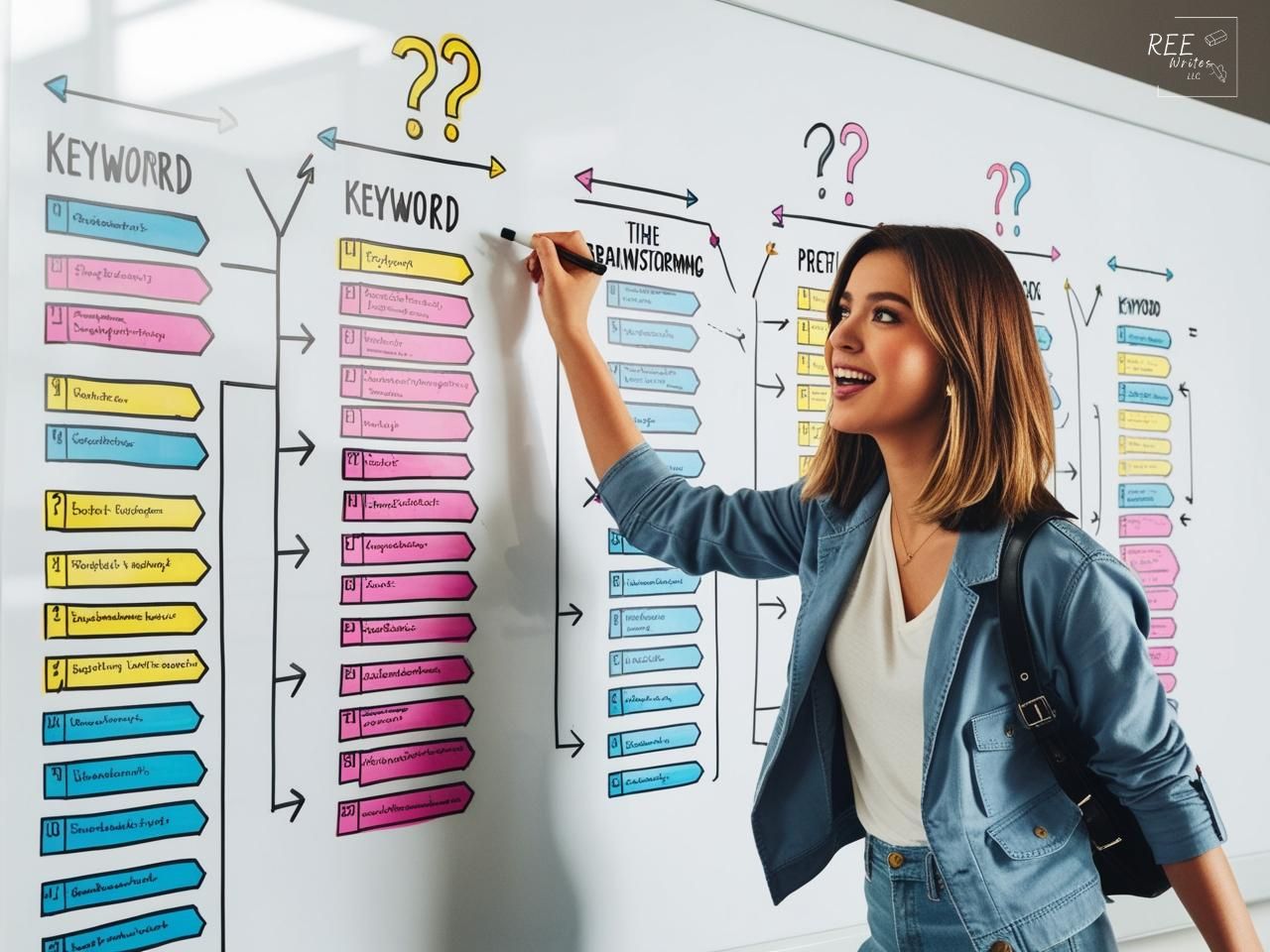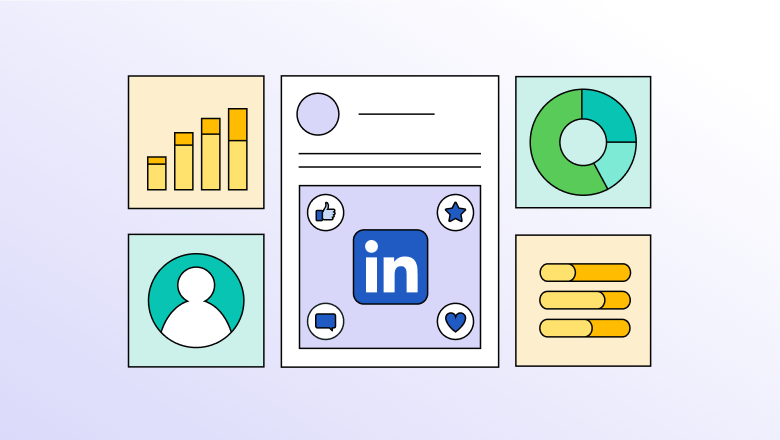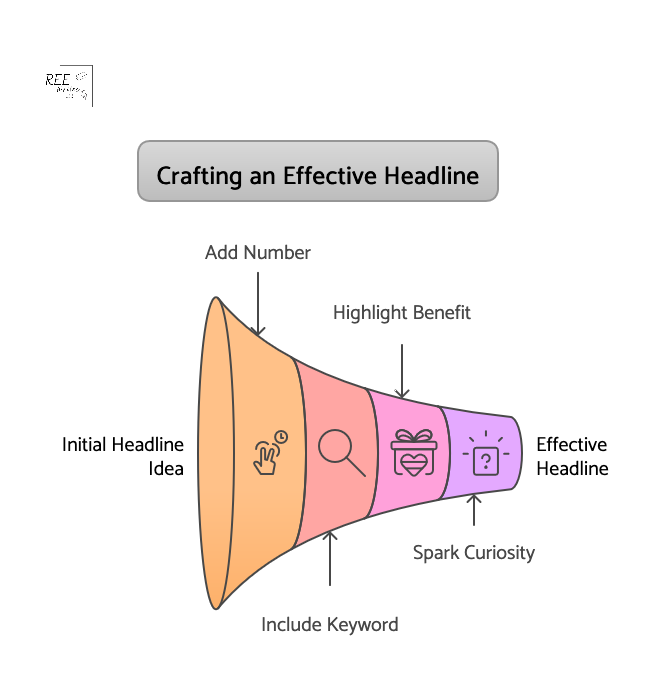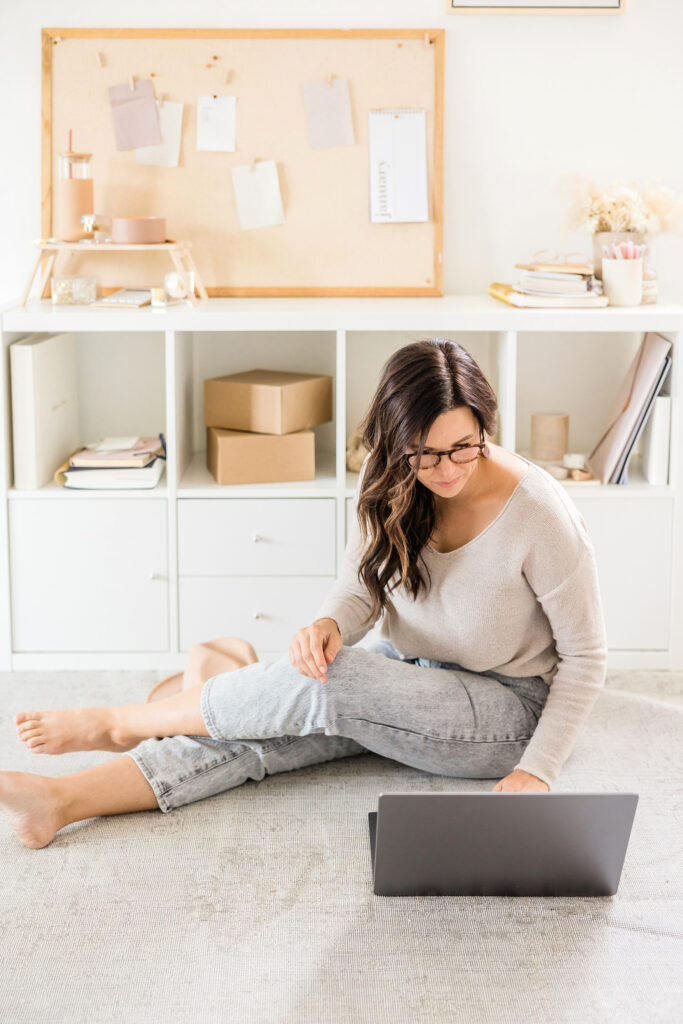Are you struggling with consistent content creation? Creating a content strategy as a solopreneur doesn’t have to be complicated.
While building a content strategy as a one-person business can feel overwhelming, you don’t need a big team or endless budget to create content that works.
With 72.7 million independent workers in the US in 2024, and 84% of businesses run by solopreneurs as of 2020, building a content strategy as a solopreneur is a must. This guide shows you exactly how to build a content strategy that fits your solo business, using simple steps to create content that connects with your audience and drives real results.
Contents
- Why Solopreneurs Need a Content Strategy
- Know Your Audience Before You Create Content
- Define Your Brand Voice and Style
- Pick the Right Content Types for Your Business
- Create a Content Calendar That Works
- Batch Content Creation for Maximum Efficiency
- Distribute Content Across Multiple Channels
- Measure Your Content Success
- Scale Your Content Strategy as You Grow
- Wrap Up
Why Solopreneurs Need a Content Strategy

What is content strategy?
Posting randomly and hoping for the best is NOT a content strategy. Creating a content strategy as a solopreneur means building a systematic approach that turns your expertise into trust, your knowledge into authority, and your consistency into customers.
A content strategy is your roadmap for creating content that builds relationships with your audience and supports your business goals. Unlike random posting, a strategic approach ensures every piece of content serves a purpose in your customer journey.
Content marketing generates 3x more leads per dollar than traditional advertising methods, making it valuable for solopreneurs working with limited budgets.
The key difference lies in having a documented plan: 80% of very successful content marketers have a documented content strategy, while only 52% of unsuccessful content marketers do.
Random posts vs. strategic content
Random posting is not a strategy—it’s like throwing darts blindfolded. Strategic content answers specific questions your audience has and guides them through their decision-making process.
Strategic content creation is the way. It involves:
- understanding your audience
- planning your topics
- aligning your content with your business goals
Use high-quality content to build trust and authority

Content marketing helps establish you as a thought leader in your industry, and quality content influences buying decisions. 58% of decision-makers spend an hour or more each week engaging with thought leadership content.
When you consistently provide valuable information, solve your audience’s problems, and share insights, you build credibility that builds their trust.
Consistent content creation has long-term benefits

Consistency builds familiarity and reliability. When your audience knows they can count on you for valuable insights, they’re more likely to turn to you when they need your services.
Consumers favor custom content, and businesses that create content consistently see better brand recognition and customer loyalty.
Common myths about content marketing for solopreneurs
Myth 1: You need viral content to succeed.
Reality: Evergreen content that consistently provides value outperforms one-hit wonders.
Myth 2: Content marketing only works for certain industries.
Reality: 90% of all organizations use content marketing. Every business can benefit from educational, helpful content.
Myth 3: More content equals more success.
Reality: Quality trumps quantity. It’s better to post high-quality content once a month than post mediocre content every week.
Know Your Audience Before You Create Content

Identify your ideal customer profile
Start by creating detailed buyer personas that go beyond basic demographics. Your ideal customer profile should include pain points, goals, challenges, and how they consume information.
When you understand your audience’s behavior, needs, interests, and motivations, it helps you create content that resonates with them.
Research where your audience spends time online
Different audiences prefer different platforms. B2B audiences favor LinkedIn, while creatives prefer Instagram and TikTok. Use analytics tools to identify where your current customers spend their time online.
Create simple buyer personas without complex tools
You don’t need expensive software to create effective buyer personas. Start with basic questions:
- What problems do they face?
- What solutions are they seeking?
- How do they prefer to consume content?
Free templates from HubSpot and Delve AI can help you get started.
Use social media insights to understand audience behavior

Platform analytics provide valuable data about your audience’s behavior. Check metrics like:
- engagement rates
- peak activity times
- content preferences
This data helps you understand what resonates with your audience and when they’re most likely to engage.
Test content ideas with your existing network
Before investing heavily in content creation, test your ideas with your existing network. Share concepts with current clients, colleagues, or social media followers to gauge interest and gather feedback.
Define Your Brand Voice and Style

Define your unique perspective and personality
Your brand voice is what sets you apart from competitors. If your business were a person, how would you describe it? Are you approachable and friendly, or authoritative and professional?
Your voice should reflect your values and resonate with your target audience.
Create simple brand guidelines for consistency

Document your brand voice characteristics, tone variations for different scenarios, and do’s and don’ts. Brand voice guidelines should include your brand’s personality traits, audience insights, and examples of appropriate messaging.
Create style guides for consistency
To maintain high-quality content, document your brand voice, writing style, and content standards for your internal team, freelancers and other vendors to follow. Following a style guide ensures consistency and reduces the time needed for revisions.
Use storytelling to connect with your audience

Stories create emotional connections and make your content more memorable. Share your entrepreneurial journey, client success stories, and behind-the-scenes insights. People need to connect with you before they trust what you have to say.
Maintain authenticity while staying professional
Authenticity builds trust, but maintain professionalism appropriate for your industry. Share personal insights while keeping your business goals in mind. Balance personality with expertise to build credibility.
Adapt your voice for different platforms
While maintaining consistency, adapt your voice for platform-specific audiences and formats. LinkedIn content may be more professional, while Instagram content can be more casual and visual.
Pick the Right Content Types for Your Business
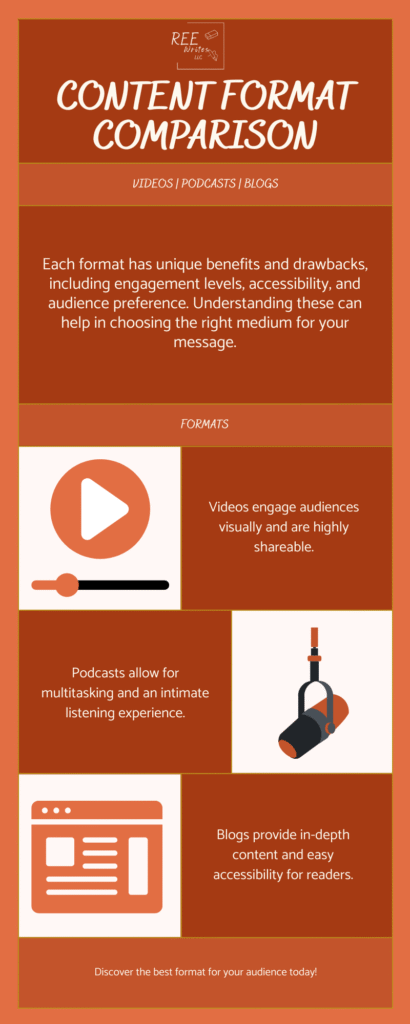
Compare blog posts, videos, podcasts, and social media content
The choices of how to distribute your content are endless:
- Blog posts are SEO-friendly and help establish authority. They’re cost-effective and can be repurposed into other formats.
- Videos are highly engaging and can succinctly deliver complex messages.
- Podcasts offer convenience for busy audiences and provide intimacy through voice connection.
- Social media content enables real-time engagement and community building.
Choose content formats that align with your skills and available time. If you’re a natural writer, start with blogging. If you’re comfortable on camera, consider video content.
Consider preferred content formats
Your audience’s preferences are another factor that should guide your content format choices. B2B audiences may prefer in-depth white papers, while consumer audiences may engage more with visual content. Use surveys or analytics to understand their preferences.
Start with one or two content types before expanding
Focus on mastering one or two content types before expanding. This approach prevents overwhelm and allows you to build systems and workflows that can scale. Quality execution of fewer formats beats mediocre execution across many.
Repurpose content across different platforms
One piece of core content can be adapted for multiple platforms. You could use a portion of a blog post in a video script, social media posts, and/or email newsletter content. This strategy maximizes your content investment while maintaining consistency across channels.
Create a Content Calendar That Works

Plan content themes around your business goals
Your content calendar should align with your business objectives. If you’re launching a new service, create content that educates your audience about related topics. Align your content marketing goals with your overall business goals like brand awareness, lead generation, and customer retention.
Use free tools to organize your content schedule

Tools like Google Sheets, Trello, and Notion (my favorite!) can help you organize your content calendar to help you visualize your content pipeline and maintain consistency. Many content creators on YouTube offer free content calendar templates on platforms like Gumroad and Etsy.
Balance promotional and educational content
Follow a content mix that provides value while promoting your services. One approach is the 80/20 rule: 80% educational/helpful content, 20% promotional. For example, you could do 2 educational posts, 2 storytelling posts, and 1 promotional post each month. (And if that seems like a lot, I’m here to help!)
Account for seasonal trends and industry events

Plan content around industry conferences, holidays, and seasonal trends relevant to your business. This approach helps you stay relevant and capitalize on increased interest in specific topics.
Build in flexibility for trending topics and news
While planning is important, leave room for spontaneous content that responds to industry news or trending topics. This flexibility helps you stay current and engage in real-time conversations with your audience.
Batch Content Creation for Maximum Efficiency
Content batching can help you create multiple pieces efficiently by dedicating focused time blocks to create similar content types together.
Set up dedicated content creation blocks

Block out specific times for content creation rather than trying to create content daily. This approach reduces task-switching and helps you maintain focus and creative flow.
Develop templates for different content types
Templates speed up the creation process and ensure consistency across your content. Create templates for blog posts, social media content, email newsletters, or whatever content you produce. Include elements like headlines, introductions, and call-to-action (CTA) sections.
Create multiple pieces of content in single sessions
Content batching can help you create a month’s worth of content in just a few hours.
During batching sessions, create multiple pieces of similar content. Write several blog posts, record multiple videos, or create a week’s worth of social media content.
Use content pillars to generate ideas quickly

Content pillars are main themes/categories that guide your content creation. They may include industry insights, behind-the-scenes content, educational tutorials, and client success stories. The Breezy Company recommends 5 content pillars:
- educational
- personal
- client-focused
- industry insights
- promotional
Establish an organized workflow to save time
Develop a repeatable process for content creation, from ideation to publication. This may include research, writing, editing, visual creation, and scheduling. A systematic approach ensures scalability, quality, and efficiency.
Distribute Content Across Multiple Channels

Choose platforms where your audience is most active
Instead of spreading yourself thin across all platforms, concentrate on those where your audience is most engaged and likely to convert. Focus your efforts on the one or two channels that bring you the best return.
Customize content for each platform’s requirements
Each platform has unique requirements and audience expectations. LinkedIn posts should be professional and industry-focused, while Instagram content should be visual and engaging. Adapt your content format and tone accordingly.
Use scheduling tools to maintain consistent posting

Social media planning tools like Buffer, Hootsuite, and Later help you maintain consistent posting schedules without being tied to your devices. Scheduling tools can maintain consistent posting and allow you to focus on content creation instead of daily posting.
Cross-promote content between different channels
Promote your blog posts on social media, mention your podcast in your newsletter, and share social media highlights in your blog. Cross-promotion maximizes the reach of your content across your entire audience.
Track which platforms drive the most engagement
Use analytics to identify which platforms generate the most engagement, traffic, and conversions. To compare ROI, divide sales by your time and resources.
Measure Your Content Success
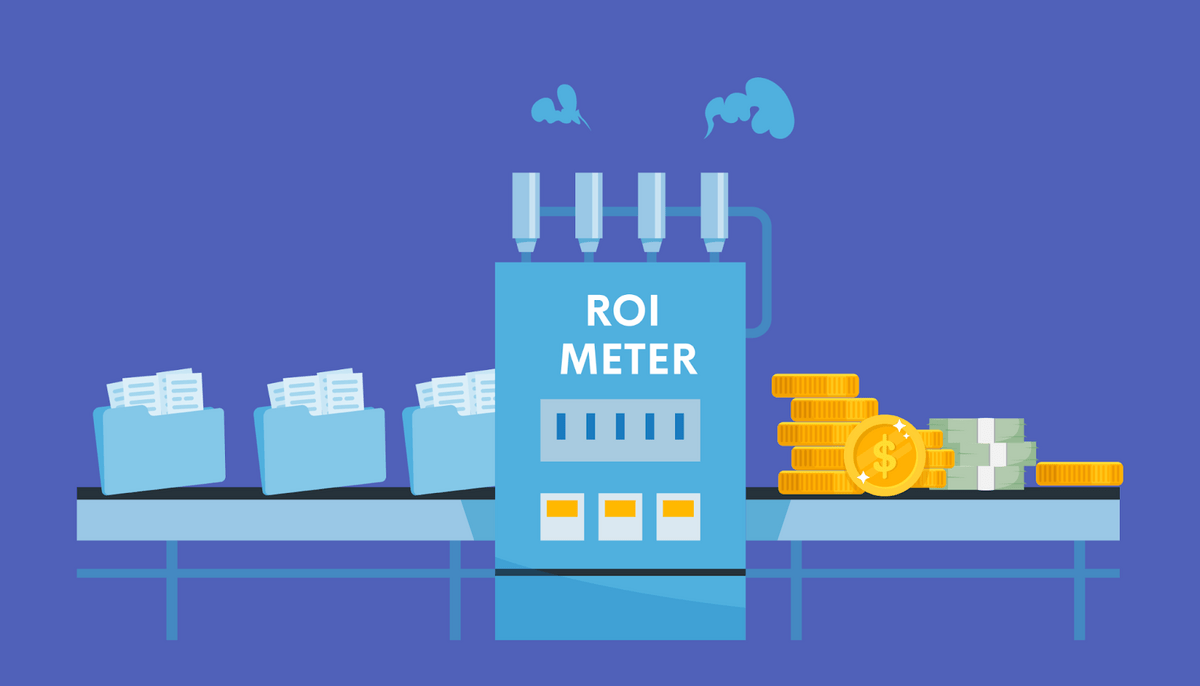
Set up simple tracking for key metrics
You can’t scale your content marketing efforts effectively without seeing your analytics. Focus on engagement, traffic and lead generation.
The formula for content marketing ROI is (Return – Investment) / Investment × 100.
Key metrics to track include:
- website traffic
- social media engagement
- email subscribers
- lead generation
Use free analytics tools to monitor performance

Google Analytics, social media insights, and email marketing analytics provide valuable data for free!
Google Analytics helps you understand website visitor behavior, goal tracking, and provides customizable reporting.
Track metrics that align with your business goals using Google Analytics for your website, and use platform-specific analytics for social media and email.
Adjust your strategy based on what works
Regularly review your analytics to identify high-performing content and successful strategies. 33% of marketers report difficulty measuring ROI due to integration issues, so start simple and build complexity over time.
Create monthly reviews to improve your approach
Schedule monthly reviews to assess content performance, adjust your strategy, and plan for the following month. Look for patterns in successful content and replicate those elements in future pieces.
Scale Your Content Strategy as You Grow
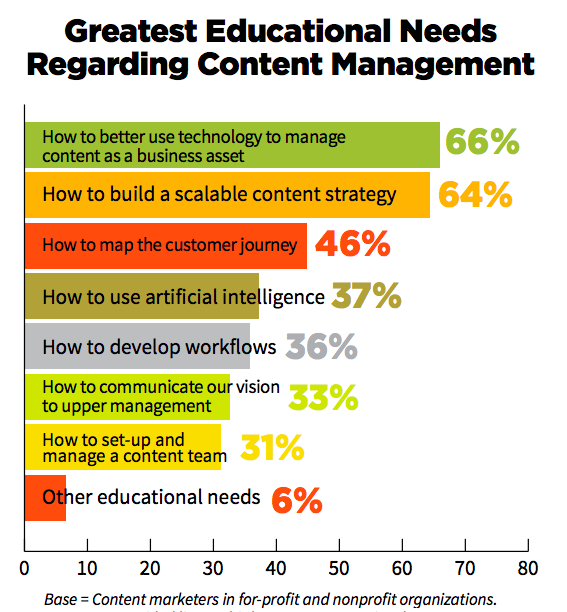
Content creation is often one of the first areas solopreneurs need to outsource. In a survey from Content Marketing Institute, 64% of content marketers say their greatest educational need is understanding how to create a scalable content strategy. Plan your content budget and identify tasks that can be delegated as your business grows.
Build systems and document your processes

Create standardized processes for content creation, review, and approval.
Search engines prioritize valuable, relevant, high-quality content. Focus on creating systems that support quality while enabling increased production.
Delegate tasks outside your wheelhouse
Break down your writing process into small steps to identify which tasks to delegate while maintaining quality. Consider outsourcing the tasks that don’t require your direct expertise, which could be graphic design, editing, or content formatting.
Wrap Up
Your audience wants to hear from you, and they need to hear your unique perspective and expertise. Start with one platform, create valuable content for your audience, and gradually expand your efforts as you gain experience and resources.
Update your content strategy as your business grows. By implementing these strategies systematically, you’ll build a content marketing system that supports your business growth while establishing you as a trusted authority in your field.
The best content strategy is one you can actually stick with. Focus on progress over perfection, and watch your content strategy become a powerful engine for business growth.
References
2019 B2B Thought Leadership Impact Study. (2019). Edelman. Retrieved from https://www.edelman.com/research/2019-b2b-thought-leadership-impact-study
30+Interesting Solopreneur Statistics. (n.d.) Higo Creative. Retrieved from https://www.higocreative.com/blog/solopreneur-statistics
Content Marketing Infographic. (n.d.). Demand Metric. Retrieved from https://www.demandmetric.com/content/content-marketing-infographic
Heitzman, A. (2024). 30 Content Marketing Statistics for 2024 and Beyond. HigherVisibility. Retrieved from https://www.highervisibility.com/seo/learn/content-marketing-statistics-trends-data-strategy/
McCoy, J. (2024). ROI-driven content marketing: Aligning strategies with revenue goals. Search Engine Land. Retrieved from https://searchengineland.com/roi-driven-content-marketing-align-strategies-revenue-goals-439116
Miller, D. (2016). How Small Businesses Can Optimize Content Better for ROI. Entrepreneur. Retrived from https://www.entrepreneur.com/growing-a-business/how-small-businesses-can-optimize-content-for-better-roi/282470
Scaglione, J. (2020). The Ultimate List of Content Marketing Analytics Tools (+ Free Benchmark Report!). Media Shower. Retrieved from https://mediashower.com/blog/the-ultimate-list-of-content-marketing-analytics-tools/
Shehu, A. (2021). How to Measure the ROI of Content Marketing: A Step-by-Step Guide. CoSchedule. Retrieved from https://coschedule.com/content-marketing/content-marketing-roi
The Independent by Choice Movement: Authentic and Intentional State of Independence in America 2024. (2024). MBO partners. Retrieved from https://www.mbopartners.com/state-of-independence/
Whalen, H. (2024). 6 Tips for Scaling Up Content Production Without Sacrificing Quality. Single Grain. Retrieved from https://www.singlegrain.com/content-marketing-3/6-tips-for-scaling-up-content-production-without-sacrificing-quality/

